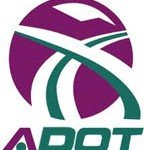ADOT and Pedestrian Safety
By Kohinoor Kar and Mike Cynecki
 Sedona, AZ (August 29, 2011) – The need for pedestrian and bicyclist safety at schools, especially involving young students, cannot be overemphasized. While federal, state and local agencies are encouraging fit and healthy lifestyles by promoting walking and biking to school, the safety of children should be our highest priority. Arizona has been a leader in providing a system for safe school crossings, and there is some important information motorists should know while driving around schools in our communities.
Sedona, AZ (August 29, 2011) – The need for pedestrian and bicyclist safety at schools, especially involving young students, cannot be overemphasized. While federal, state and local agencies are encouraging fit and healthy lifestyles by promoting walking and biking to school, the safety of children should be our highest priority. Arizona has been a leader in providing a system for safe school crossings, and there is some important information motorists should know while driving around schools in our communities.
Arizona has a unique way to establish low speed school zone crossings that does not exist anywhere else in the United States. The system was first established in 1950 through adoption of Arizona Revised Statutes 28-797. This state law provides a uniform application of 15 mph school zone traffic control that can only be used for elementary and middle schools (kindergarten through eighth grades) in Arizona at authorized school crossings meeting certain minimum criteria.
The 15 mph school zones cannot be used at crosswalks that are controlled by stop signs or traffic signals. This law provides for the use of portable signs and yellow crosswalk markings, and the 15 mph provision is only in effect when the portable signs are placed in the street. The school zone signs are placed and removed by crossing guards or school employees under a special operating agreement between the school district and the traffic agency that controls the roadway and can only be used for legitimate school crossing activities during a normal school day.
Each 15 mph school zone is preceded by a fluorescent yellow-green pentagon shaped advance school warning sign showing two walking schoolchildren. These signs are permanently installed along the roadway in advance of the school crossing. The first portable sign placed in the street states “NO PASSING, 15 MPH, FINES DOUBLED, SCHOOL IN SESSION,” which is located about 75 to 300 feet in advance of the yellow crosswalk, depending on the non-school posted speed limit. This portable sign is placed at the location where the 15 mph speed limit begins.
It is important to note that motorists cannot pass any other slower or stopped vehicles between the first portable 15 mph sign to the yellow crosswalk. At the yellow crosswalk, a different portable sign exists which states “STOP WHEN CHILDREN IN CROSSWALK.” Unlike white crosswalks where drivers are required to “yield and stop if necessary” to pedestrians crossing on their half of the street, ARS 28-797 requires all drivers to stop if anyone (including children, adults or crossing guards) are present anywhere within the yellow school crosswalk when the portable signs are in the street. After all pedestrians exit the yellow crosswalk, drivers may proceed. Once a driver passes through the crosswalk, they may resume their normal speed (following the posted speed limit). There is not a “SCHOOL ZONE ENDS” sign in Arizona. The 15 mph speed limit and the strict no passing zone are enforced between the advance of the 15 mph portable sign and the yellow crosswalk
Motorists should be very careful when driving near 15 mph school zone crosswalks, especially when the crossing guards are placing or removing the portable signs from the street. The crossing guards are most vulnerable during these times.
In addition, motorists need to be careful any time while driving in neighborhoods near schools or school crossings, especially during the start and end times of the school day. Drivers need to be cautious around school buses and cannot pass them in either direction if they are displaying their STOP paddle while stopped to pick up or drop off students. The penalties for school zone violations and for passing stopped school buses can be quite severe, and police officers are likely to strictly enforce these safety laws with very little leeway to violators. Surprisingly, many of the motorists who are cited for school zone violations are area residents or parents attempting to drop off or pick up their children at school.
Regardless of the time of year, motorists should be vigilant while driving in neighborhoods, since young children may dart out from behind a parked car or ride their bike in the street without looking for approaching vehicles. To put it in perspective, it is better to be late for an appointment than to race through a neighborhood and experience a tragic crash with a child.
Furthermore, drivers should be kind and considerate towards any school crossing guard and should never talk on a cell phone or read and write text messages behind the wheel, since any of these activities can easily take attention away from the task of safe driving. Crossing guards usually work in extreme weather conditions and often have to contend with a lot of traffic and children. They are vital for maintaining Arizona’s positive school safety record. If we really understand and respect the need for school zone traffic safety, we can work together to make a difference and make sure school children to reach their destinations safely.
Kohinoor Kar, Ph.D., P.E., PTOE, a professional engineer with 22 years combined experience in the roadway, traffic and safety fields, has been with the State of Arizona for past seven years.
Michael J. Cynecki, P.E., recently retired from the city of Phoenix after a 26-year career in the transportation department and is currently with the consulting firm of Lee Engineering, LLC.






1 Comment
Guess safety is why ADOT is not willing to give Sedona Complete Streets (www.completestreets.com) and context sensitive design (harmonious with the rest of the city) on West Sedona’s 89A. What hypocrits. The sooner we get rid of them and determine our own future – the better.